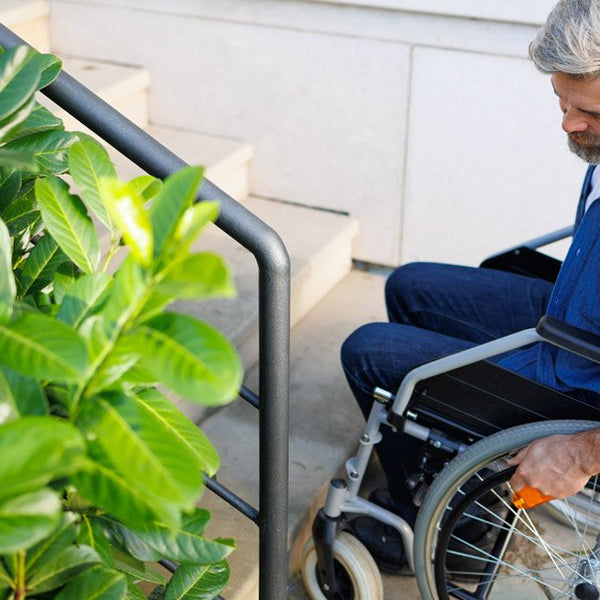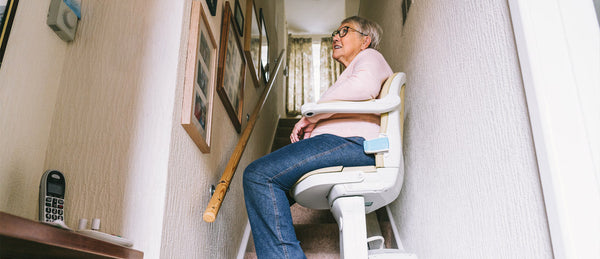Reading time: 4 minutes
We look at the role smart home technology can play in supporting your loved one and the benefits compared to traditional eldercare solutions.
As we grow older, the majority of us want to continue to live in the homes we cherish and that are full of happy memories.
The challenge for many families is providing the level of support our loved ones need to do so safely and independently. Often we cannot be with our loved ones as much as we would like. It can be worrying not knowing what is happening day-to-day. For many famlies, the Covid pandemic has highlighted this concern.
Smart devices, home automation and voiced controlled entertainment systems are now common place in our homes. This kind of techology is now being used in a new generation of telecare solutions. These go beyond the level of support provided by a traditional personal alarm system.
Affordable home care solutions
Comparing home care solutions can be confusing and in-person care can be expensive and daunting. By taking advantage of developments in Technology Enabled Care, smart home devices can provide an alternative solution at a fraction of the cost of in-person care.
Technology like smart home sensors have an important role to play in how we care for older relatives or those with chronic health conditions.
In the UK alone, there are approximately 3.6 million people aged 65 and above who live on their own. This number is expected to continue to rise, creating a concern for the mental and physical well-being of our ageing population.

Smart homes for older adults have great potential to offer unobtrusive monitoring of health and wellness, whilst allowing loved ones to remain independent in the homes they love. Smart home sensors help carers and family members identify and predict problems by monitoring changes in routine.
How can a monitoring system help you care for an older person?
Taking Care Safe Home Alert is a smart home monitoring system for older adults. It is a package of home sensors that are monitored 24 hours a day by our Emergency Resolution team. The sensors are linked to powerful AI (artificial intelligence) that can build an accurate picture of a loved one’s daily routine and identify potential problems.
The package combines remote home monitoring with a personal alarm service. The 24/7 Emergency Resolution team receive automated emergency alerts of an issue that needs immediate attention. If your loved one needs immediate help in an emergency, they can use their personal alarm pendant to speak directly with the Emegency Resolution Team.
There are no cameras or complicated voice activated controls. It is designed to be unobstrusive and simple to use.

What emergencies can a smart home solution detect?
If Taking Care Safe Home Alert detects an emergency alert, our Emergency Resolution team is notified automatically. Emergency alerts detected include:
- No movement at the time of day when a loved one would usually be up and about.
- No movement in areas considered high risk. For example, the risk of slipping in the bathroom is higher than other areas of a house. If your loved one has gone into the bathroom and not returned, the sensors can send an alert.
- The front door left open after going to bed.
- The room temperature is too hot or cold, indicating a window has been left open or the heating has not been turned off.
What health insights can a smart home solution detect?
With Taking Care Safe Home Alert you can see changes in your loved one’s routine with insights viewed via a secure website. These insights can show changes in their daily routine you may not be aware of and could indicate they need more support.
I check the family app at least once a week and what has surprised me most is just how much habit there is to Ann’s daily routine, so actually it is pretty easy to see when something is not quite right.
Elizabeth, Taking Care Safe Home Alert customer
Smart sensors detect:
- Reduced use of the fridge, microwave or kettle, which may suggest your loved one is not eating or drinking as much as they should.
- Changes in activity during the day or night, which may suggest they are become less mobile or have emerging health conditions.
Book a smart home demo
Book an in-home demonstration of Taking Care Safe Home Alert. We'll show you the equipment, explain how it works and answer your questions.
What technology do smart home solutions use?
Taking Care Smart Home Alert uses motion sensors, room temperature sensors, door sensors, a fridge sensor and smart plugs to monitor activity around the home. An Artificial Intelligence platform analyses data from these devices and produces alerts and insights.
The sensors use wi-fi to communicate with a base unit. The data is securely transmitted to the AI platform using broadband technology.
This clever technology doesn’t mean it is difficult to set up though. Taking Care will set up and test the equipment for you as part of the service so you don’t need to worry. There’s no wiring or electrical work either!

Meeting the needs of older adults
Families want an increased level of reassurance, with the effects of Covid being felt by care homes for the elderly and other eldercare providers. Many elderly people are worried about isolating and shielding from the health risks of Covid. Steve Gates, Managing Director at Taking Care said:
“Our customer feedback shows this is a very important goal when it comes to helping older adults live in their own homes for longer. Taking Care Safe Home Alert provides support that will ensure family awareness of any changes in patterns of behaviour. It includes access to Taking Care’s 24/7 emergency resolution services in the event of an accident or fall.”
With the over 70s being particularly affected by the Covid pandemic, being able to provide families with reassurance and insight has never been more important.
Book a free home demo of Taking Care Safe Home Alert and learn how we can provide a technology enabled care solution for you.
Examples of smart home elderly care
What surprised me most at first was mama’s irregular sleeping pattern and high level of night-time activity: my sister and I had no idea that she was out of bed and wandering around her house nearly every night.
It explained why she is often so tired in the morning and during the day.
James, Taking Care Safe Home Alert customer
Here are some real-life case studies of how smart devices for the elderly are helping families care for older loved ones:



